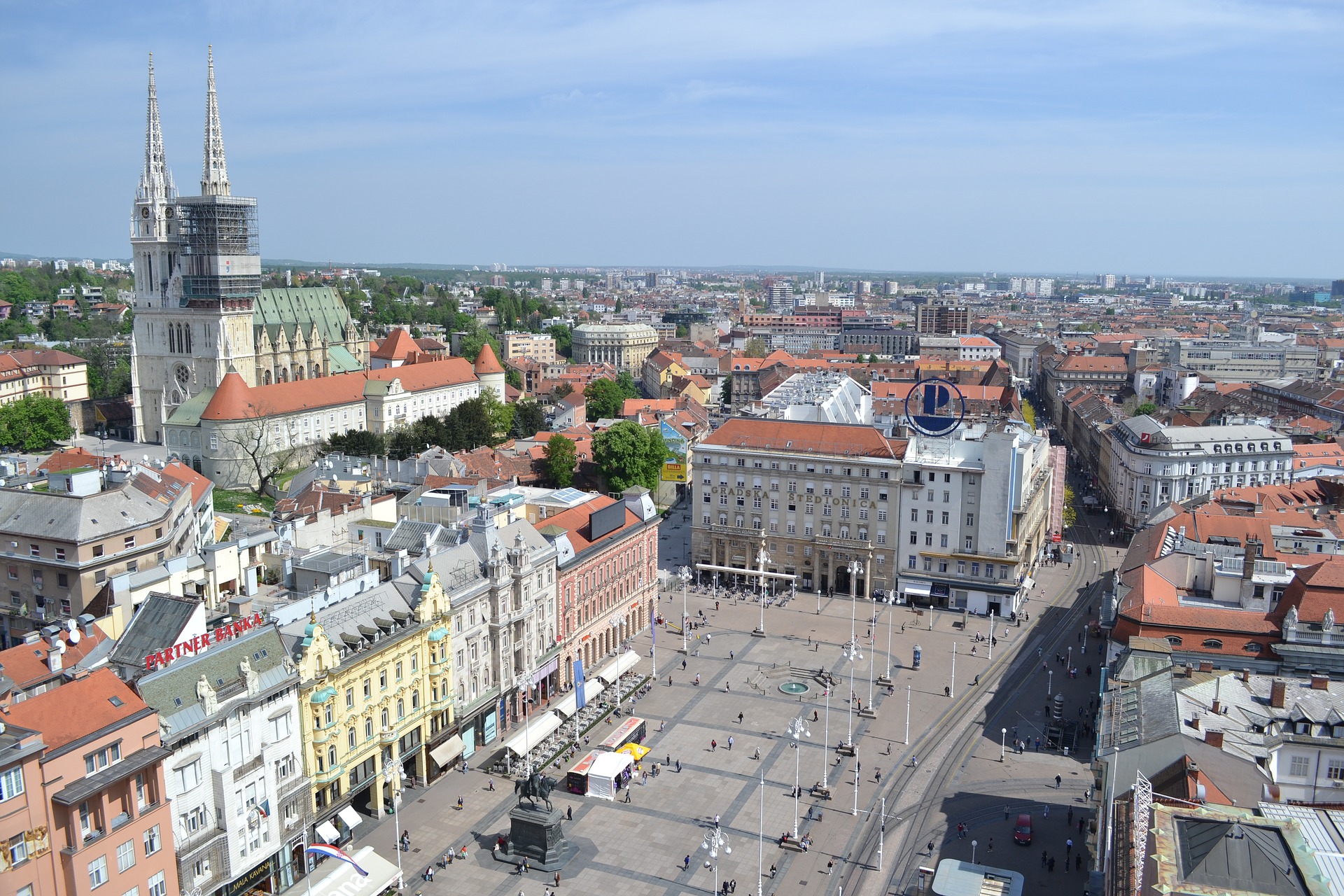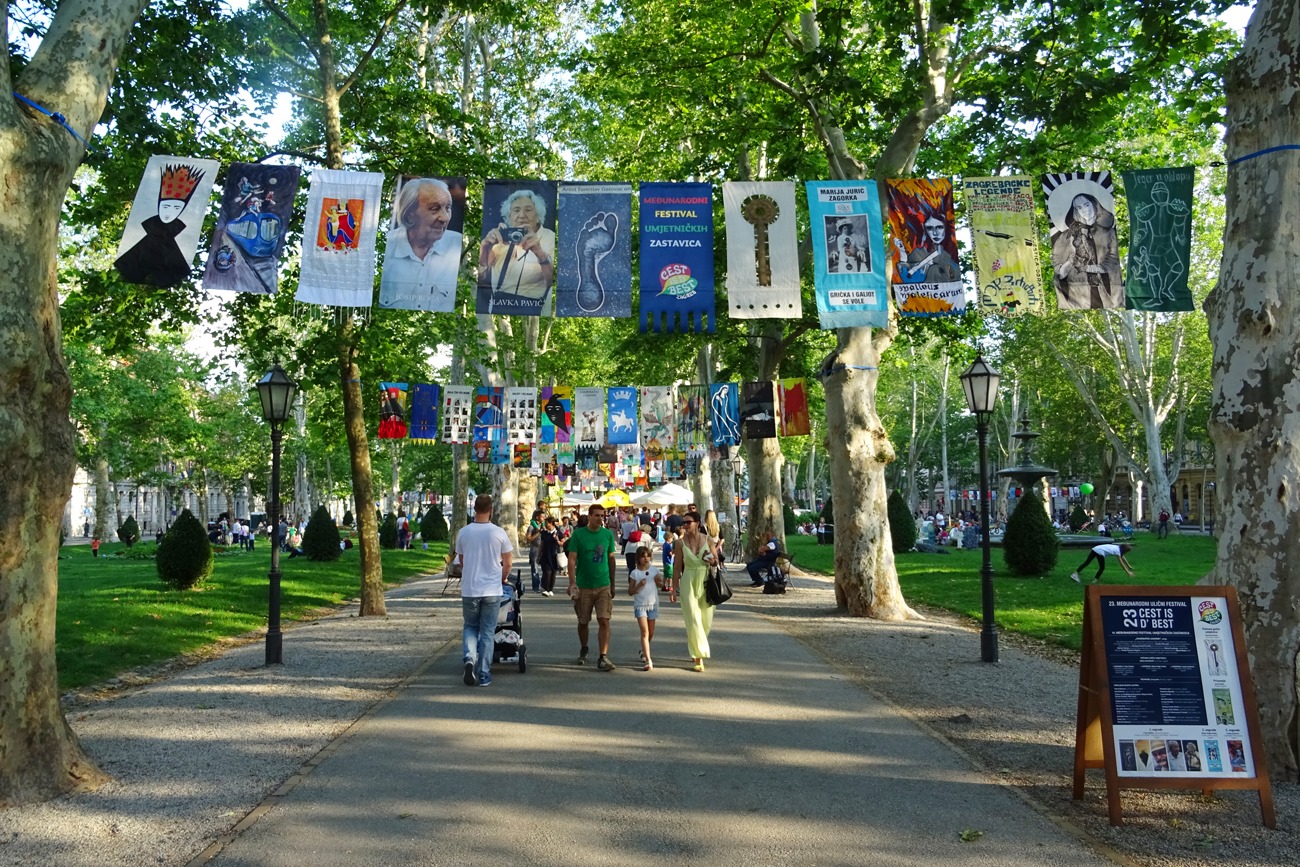Zagreb Summer Today Has 45 More Days Than During 1960s
January 21, 2021 – What will be welcome news to Zagreb's increasing number of transitory summertime visitors, may be more difficult for permanent residents (and their children) to deal with, as it's revealed the hot Zagreb summer has been extended by a considerable 45 days since the 1960s
Over recent years, the Croatian capital's rising popularity with visitors has made it the fastest-growing tourist destination in the country. But, its increasing footfall from those on holiday is not the only similarity the city now shares with the sun-drenched coast; their climates, once separate and distinct, are now closer than ever before. In fact, Zagreb summer now has on average 45 more days to its duration than it did during 1960s.
While summertime tourists don't seem to mind basking in the sunny streets while catching the city sights in t-shirts and shorts, many residents are only too aware of how stifling an entire season can be if spent solely in the capital. Zagreb summer is traditionally a time when many try to get away, to go cool off on the coast. And yet, despite this being a time-honoured tradition, the extent of the rapid and recent extension of Zagreb summer will still come as a shock to many.
The surprising details were revealed in a rather long article in yesterday's Vecernji List. Within the sprawling text, Doctor of Science Ivana Herceg Bulić, a professor at the Department of Geophysics, Faculty of Science, University of Zagreb and the head of the newly established Centre for Climatological Research said “Based on previous measurements, our analysis shows that every ten years the number of Zagreb summer days - the number of days with a maximum temperature above 25 degrees Celsius - on Grič increases by eight days. In Maksimir, on the other hand, located in a less developed part of town, measurements indicate an increase of seven additional summer days in ten years. Only when we approach the end of the city like Pleso do we reach the number of six summer days more. Zagreb today has 45 more summer days than we had in the middle of the last century." The centre of Zagreb is the area of the capital which has experienced the most sustained rise in temperatures
The centre of Zagreb is the area of the capital which has experienced the most sustained rise in temperatures
The reason for the increase in Zagreb summer is less welcome than the hot days it provides; global warming and climate change are the cause, compounded by inadequate urban planning. As TCN has recently reported, the population of Zagreb continues to rise. As it does so, the demand for new buildings increases and the city boundaries extend. This creates an island of heat whose concrete retains the warmth of the day, long after the sun has set, resulting in sustained high temperatures. Studies show that such conditions are disadvantageous to health.
The information given by Dr Herceg Bulić comes from a new report by the Centre for Climatological Research. Coming just days after Zagreb residents were informed that they had just breathed the worst quality air in the whole of the European Union, you could forgive anyone considering to make their Zagreb summer exodus a more permanent move. But, the news isn't all that bad.
Less built-up areas of the city, those with extensive parkland and who have kept the trees that line their avenues, record a much less harsh summer temperature. In Croatian cities like Osijek and Karlovac, where parkland and trees within the city are cherished, the summers are far from stifling. Though climate change requires a global response, Zagreb can easily address its own summer burden with better urban planning, the preservation of grasslands, parklands and trees, plus the planting of more. Such foresight is necessary to embrace now if we are to ensure that Zagreb summer in the future will be as welcoming to visitors and as wonderful for residents as it is today.
350 Colourful Flags Will Cover Zagreb At New International Flag Festival
August 7, 2020 - Trg Bana Josipa Jelacica, Zrinjevac, Europski trg and Ul. Augusta Cesarca will bloom brightly with banners at the International Flag Festival next week
Zagreb will erupt with colour this August as the city welcomes its first International Flag Festival. Ban Jelačić Square, Zrinjevac park, Europe Square and Ulica Augusta Cesarca will be covered in eye-catching banners made by artists from Argentina, Uruguay, Finland, Russia, India, Italy, Canada, USA, Croatia, Bosnia and Herzegovina, Serbia, Montenegro and Slovenia.
© Međunarodni festival umjetničkih zastavica /
Trial runs for the International Flag Festival have taken place in previous years as part of the popular Cest Is d’Best Festival. However, the adornments have proved such a popular addition to city parks and streets that the run of flags has been expanded and given its own dedicated event.
Artists from over 20 countries will take part in this year’s inaugural event. The theme for the 2020 edition is European Identity and Europe Intimately. Each artist will deliver their own vision of what Europe means to them.
© Međunarodni festival umjetničkih zastavica / International Flag Festival
Keep an eye out for the festival of flags in the Croatian capital from Monday. It’s doubtful you’ll be able to miss the wonderful display! The International Flag Festival runs from 10th August to 20th August.
After Floods, Earthquake, COVID-19, The City Is Not Broken: This Is Zagreb!
July 27, 2020 – OPINION: Marc Rowlands downplays the doom and gloom, claiming it will take even more than 2020's disasters to permanently damage Zagreb
International readers must think the city has fallen. After the triple hit of COVID-19, the strongest earthquake in a century, and last weekend's floods, they must imagine the people of Zagreb to be largely underwater, the tips of their toes resting on rubble, struggling to breathe above the waves through their surgical masks.
Their suspicions would only be justified if they're reading the comments sections of the coverage. “Oh, whatever next?”, “What will become of us?”, “May God save us!”, “First an earthquake, now snow! It's the end of the world!”, “It's because of global warming, I told you years ago. Now, not even my bitterness can save us”. Jadni smo (poor us).
That's because there are two types of people in this world; the doom-mongers - useless pessimists who sigh, tut, and briefly sympathise while reading the news, and then there are the positive thinkers who actually get up off their ass and help out. Sadly, the internet is full of the former. Thankfully, Zagreb is full of the latter.
Take for example Mirna Mrčela, who rescued a man from a sinking car on Friday night. Did she stop to worry about the implications for her or for the sunken city before diving into waters on Miramarska street to save him? She did not.
What about the young Zagreb residents who gave up their free time to help rebuild people's homes following this year's earthquakes? Or those who volunteered to help move children from the damaged wards of a hospital? What about the thousands of Croats who thought of innovative or compassionate schemes to raise money for those affected? Or the many more who donated? Or those who used their own drones to help assess damage to buildings? Was their assistance delayed by worry and self-pity? No.
Thousands of young people have been gathering outside the Croatian National Theatre at weekends. The real picture in Zagreb © Marc Rowlands
Even aside those who actually helped out, the story of Zagreb in the wake of both the earthquake and the floods has been one of irrepressible resilience, optimism, and joy. Thousands of young people have gathered outside the Croatian National Theatre at weekends simply enjoying to be, and each other. In recent weeks, Ribnjak Park, Zrinjevac Park, and Strossmayer Promenade in the city have come alive with gastronomic events, music, and people enjoying themselves.
On Monday 27 July, as the sun shines brightly above Zagreb, the last remnants of the flood are all but gone. People are at work, as usual, and some tourists can be seen taking tours around Tkalčićeva and the cathedral. No matter what news story comment sections might tell you, this city is open for business. Zagreb has seen much worse than this. And it will take a lot more than rain, earthquakes or, yes, even snow to dampen its spirits.
Irresponsibility in Coronavirus Era Costs: Will Zagreb Parks Close?
Croatia is not in quarantine, and that's extremely important to point out. People can leave their houses amid the coronavirus pandemic, but not their cities/counties/towns of registered permanent residence. People are free to leave their houses to go to pharmacies and the food stores which remain open as they're of course classed as essential.
What people cannot do, is gather together, wander and sit around aimlessly on benches, on streets or in parks. Social distancing, however it may sound to some, appears to be an effective way of controlling the spread of coronavirus.
Across Facebook, there have been countless posts from people asking if lockdown was over now, because of the amount of people running, jogging, walking and appearing to have very normal family days out in parks. This has unfortunately been especially true in Zagreb, where, ironically, the most coronavirus positive patients are located.
As Poslovni Dnevnik writes on the 11th of April, 2020, in the face of people continuing to break the rules, the National Civil Protection Headquarters has warned that there has been no relaxation to the country's stringent anti-epidemic measures, because any failure to comply with the instructions will only prolong this less than ideal situation and put people's health and in some cases, lives, at even more risk.
As Jutarnji list has unofficially reported, in the next few days, there will be increased control of all areas where the gathering of more people has been recorded.
Failure to adhere to the measures which are firmly in place, for which violations are punishable, more specifically, failure to reduce the crowds on popular promenades, picnic areas and parks would result in the complete closure of such areas, which, in Zagreb in particular, would mean the closure of Bundek, Jarun and even Sljeme.
Make sure to follow our dedicated section on coronavirus in Croatia for rolling updates and important information.
Zagreb to Get a Large New Park in Blato District
A little more green for the people of Zagreb.


